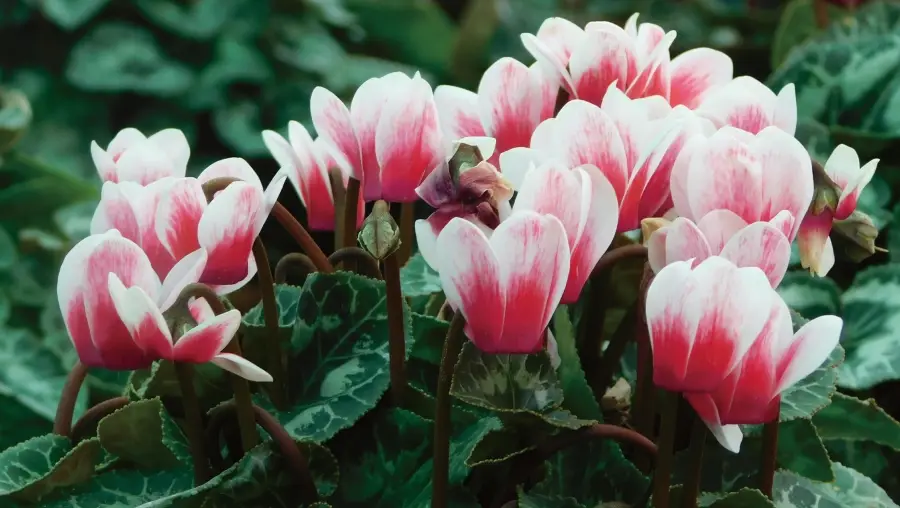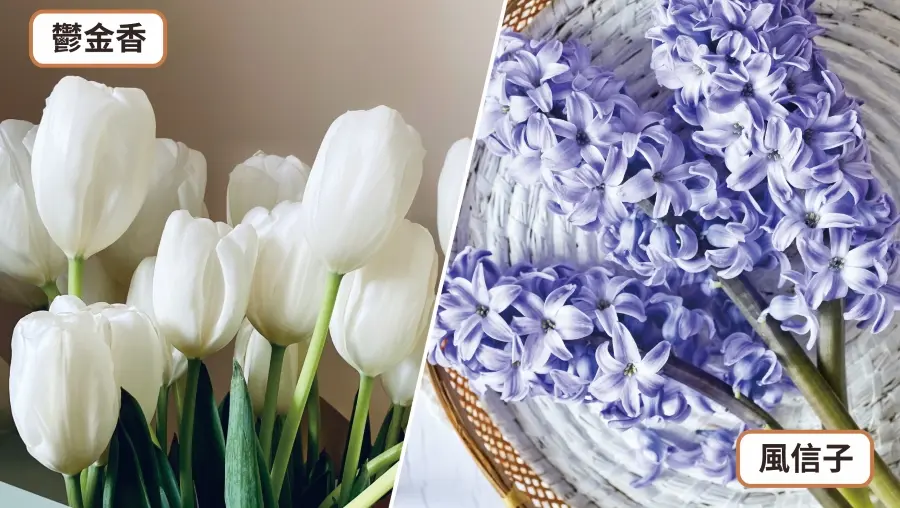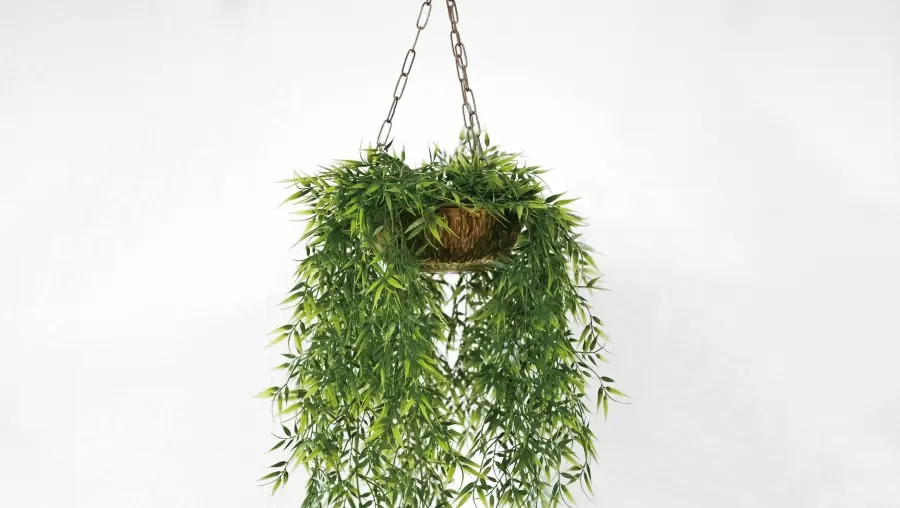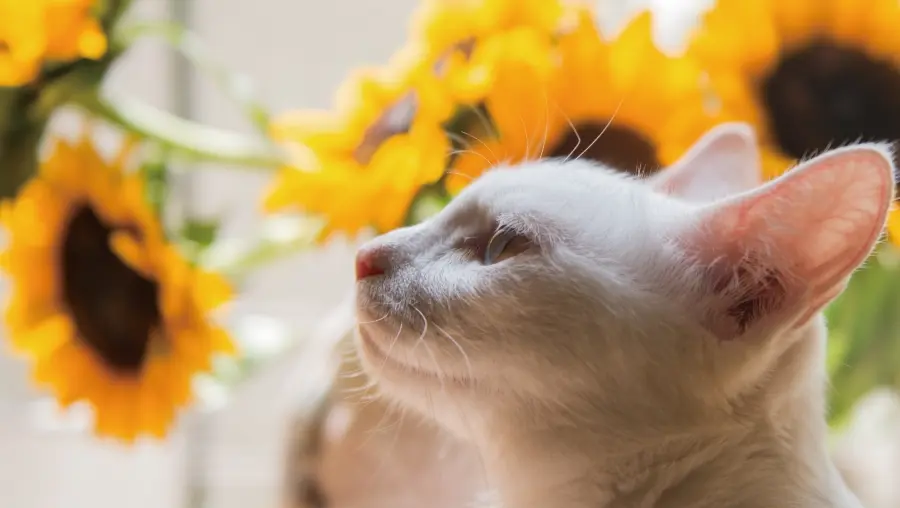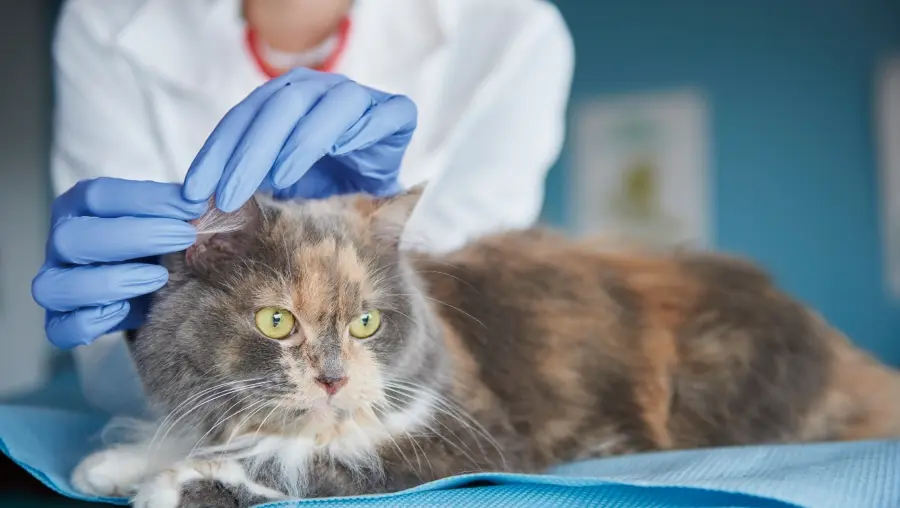Are you aware that lilies can poison your cat? Exposure to lilies may even lead to shock in your feline companions. There is a case where a cat, merely passing by lilies, suffered from acute renal failure and died within 12 hours of arriving at the hospital, before blood dialysis could be administered. Besides lilies, there are many ornamental plants that are highly toxic to cats. Therefore, it is crucial to be well-informed about plants that are extremely poisonous to cats in daily life. In this article, we will inform cat parents about the 12 toxic plants to cats, plants that are harmless to cats, suitable flowers and plants for cat owners, and potted plants for cats. How to deal with a cat that has ingested or touched toxic plants? Apart from lilies being highly toxic to cats, there are other flowering plants and plants that also possess toxicity. Read on to find out more! OPEN article table of contents: 12 common plants toxic to cats – Lily, Rhododendron, Cyclamen, Tiger Tail Plant, Dracaena, Kalanchoe (Flaming Katy), Oleander, Foxglove, Sago Palm, Tulip & Hyacinth. How to ensure your cat’s safety when planting at home? Method 1: Use hanging pots. Method 2: Choose cat-friendly and non-toxic plants. Common questions: What to do if your cat eats toxic plants? 12 common plants toxic to cats – Which plants should cat parents avoid their cats from touching? We can prevent cats from contacting toxic plants through the following list of toxic plants. Lily: Lilies are extremely toxic to cats, and even a small amount can lead to death. Cats are not wary of plants in the Lily family, meaning that if lilies are present in the environment, cats are likely to come into contact. The exact toxicity of lilies to cats is not well-documented, but it is known to contain lycorine and other alkaloids. Once these substances enter a cat’s body, they can cause symptoms such as vomiting, diarrhea, low blood pressure… and more severe cases can lead to cats being unable to urinate properly, leading to renal tubular changes and renal failure. [Plants containing lycorine] In addition to lilies and other Lily family plants, other plants such as Narcissus, Amaryllis, Clivia, and Tuberose also require special attention to prevent cats from touching them. Rhododendron: Rhododendrons are common flowering shrubs, but all parts of the plant – flowers, leaves, and stems – are highly toxic to cats. Ingestion of even a small amount can lead to poisoning. The toxic substance in Rhododendron is Grayanotoxin, which can cause excessive salivation, vomiting, diarrhea, loss of appetite, and other gastrointestinal symptoms in cats. In severe cases, it can lead to arrhythmias, coma, or even death. [Plants containing Grayanotoxin] Plants in the Rhododendron family and some Ericaceae family plants (such as Pieris, Andromeda) also produce Grayanotoxin, which can be found in honey made from their pollen. (Source) Cyclamen: Cyclamens are a genus of perennial flowering plants, commonly used as ornamental indoor potted plants. They are toxic not only to cats but also to dogs. The toxic substance is Triterpenoid saponins, which can cause excessive salivation, vomiting, and diarrhea in cats and dogs. In severe cases, it can lead to arrhythmias, seizures, and death. The head of the garden says: Triterpenoid saponins are amphiphilic compounds that can form stable foams in water and are commonly used in the production of detergents. This is why it is often advocated that cat parents should not use detergents in environments with pets. [Plants containing Triterpenoid saponins] They are mainly found in the dicotyledonous plants of the plant kingdom and can be found in plants such as Araliaceae, Fabaceae, Caryophyllaceae, Campanulaceae, Ranunculaceae, Scrophulariaceae, Cucurbitaceae… and so on. Due to the wide range, it is recommended to inform the store that you have pets at home before making the next purchase. Tiger Tail Plant: The Tiger Tail Plant is an African tropical plant, often believed to have the function of ‘removing formaldehyde’ and ‘absorbing indoor harmful gases,’ making it a very popular indoor potted plant. However, it is toxic to cats, with saponins as the toxic substance, causing excessive salivation, nausea, loss of appetite, vomiting, and diarrhea in cats and dogs, as well as skin redness & hair loss or rashes. Since the saponin content in the Tiger Tail Plant is not high, symptoms are usually mild when cats accidentally ingest or touch it, mainly manifesting as gastrointestinal symptoms and dehydration. [Further Reading] What to do if your cat doesn’t drink water? How to calculate your cat’s daily water intake? [Plants containing saponins] They are mainly distributed in terrestrial vascular plants and are also found in small amounts in marine organisms such as starfish and sea cucumbers. Many traditional Chinese medicinal herbs, such as ginseng, polygala, platycodon, licorice, anemarrhena, and bupleurum, all contain saponins as their main effective components. (Source) Dracaena: Dracaena, also known as the Golden Pothos, is a tropical flowering plant from the Araceae family, originally from the Solomon Islands. It is very easy to care for and is suitable for beginners, making it very popular. However, it contains insoluble calcium oxalates and proteolytic enzymes. If ingested by cats, it is like swallowing glass, causing oral irritation, vomiting, and difficulty swallowing in cats, which is very uncomfortable. [Plants containing insoluble calcium oxalates] Many common indoor and outdoor plants, usually belonging to the Araceae family, contain insoluble calcium oxalate crystals. Examples include Dracaena,马蹄莲,合果芋,黛粉叶,和平百合,绒叶蔓绿绒,绿萝… etc. Kalanchoe (Flaming Katy): Kalanchoe, also known as the Flaming Katy, is a common flowering plant with bright colors and various flower colors. However, all parts of the plant are toxic to cats. This is because Kalanchoe contains a toxin called Bufadienolide, which is also known as Cardenolide and is a type of cardiac glycoside. The manifestation of this toxin is similar to that found in Digitalis. The head of the garden says: Digitalis, Oleander, and Kalanchoe all contain cardiac glycoside toxins. Cardiac glycosides can be used as raw materials for adjusting arrhythmias and treating heart failure and other cardiotonic drugs. Cardiac glycosides interfere with the electrolyte balance of the heart’s contracting muscles, causing central nervous system disorders, gastrointestinal symptoms, electrolyte disorders, arrhythmias, seizures, and even death. [Plants containing Bufadienolide] Plants with Bufadienolide toxins are characteristic of the Crassulaceae subfamily. The same toxin is also found in the Portulacaceae family, and some experts speculate that this neurotoxin may have evolved as a defense mechanism against herbivores. Oleander: Oleander is a flowering shrub commonly planted outdoors and contains a cardiac glycoside toxin called Oleandrin, which can adversely affect the myocardium of cats. If a cat accidentally ingests or touches Oleander, symptoms may include excessive salivation, vomiting, diarrhea, limb incoordination, and seizures, and in severe cases, heart abnormalities. All parts of the Oleander plant are toxic, including water that has been soaked in Oleander, so cat parents should avoid planting Oleander in their yards and should not bring Oleander home. Digitalis: Digitalis flowers are bell-shaped and are usually used for ornamental purposes but are also used to extract and make traditional Chinese medicinal materials. The entire plant is toxic and contains cardiac glycoside toxins. In addition to cardiac glycosides being the main reason for the high toxicity of Digitalis, the plant also contains several steroidal saponins that can also cause damage to a cat’s body after consumption. The main symptoms caused by cardiac glycosides are excessive salivation, nausea, vomiting, weakness, pupil dilation, tremors, arrhythmias, seizures, and even death. Cats only need to consume a small amount of Digitalis to exhibit severe symptoms, which can even lead to the loss of life, so emergency medical treatment is necessary. Sago Palm: Sago Palm is a common outdoor ornamental plant in tropical/subtropical areas. All parts of the plant contain a substance called Cycasin, which is harmful to all pets. Even the seeds are the most toxic part, and humans can also become poisoned if they mistakenly ingest the seeds of the Sago Palm, leading to liver damage. If a cat mistakenly ingests it, symptoms such as vomiting and diarrhea, dehydration and frequent drinking, lethargy… and other signs of liver failure will occur, which can lead to death in severe cases. The head of the garden says: The trunk of the Sago Palm contains a lot of starch, which can be ground into flour for consumption, known as Sago, a common snack in the East. However, because the entire Sago Palm contains Cycasin, it needs to be repeatedly rinsed to remove the toxicity when producing Sago. In addition to Sago, in Japan, it can also be made into Sago Miso. [Plants containing Cycasin] Cycasin is found in all known Cycas family plants, distributed throughout the plant, but in the highest concentration in the seeds. It is toxic to mammals, so special care should be taken. Tulip & Hyacinth: Tulips and Hyacinths are very ornamental and popular bulb plants, belonging to the Lily family. Both Tulips and Hyacinths contain alkaloids similar to Narcissus, mainly concentrated in the bulb part. The signs of poisoning are similar to those of Lilies and Narcissus, causing excessive salivation, vomiting, diarrhea, depression, jaundice, and whole-body tremors in cats, which can lead to coma or even death in severe cases. [Bulb plants are a danger signal] Bulb plants almost all contain toxins, mainly concentrated in the bulb part of the plant, so do not let cats approach any bulb plants. How to ensure your cat’s safety when planting at home? Some plants may not be fatal, but if cats accidentally ingest them, they may also cause stomach discomfort. So, how can we ensure that cats do not accidentally ingest indoor plants? Method 1: Use hanging pots. Using hanging pots can prevent cats from jumping up and ingesting them. You can use hanging pots to prevent cats from direct contact with plants and place the plants in areas that cats usually do not reach. Method 2: Choose cat-friendly and non-toxic plants. It is usually recommended that cat parents do not place too many plants at home or purchase plants that are harmless to cats. We have compiled a list of plants that are harmless to cats and suitable for cat owners for cat parents to refer to: Coconut plants (Miniature Coconut… etc.), Fern plants (Iron Fern… etc.), African Violet, Chlorophytum. [Further Reading] What are Catnip and Cat Grass? Daily Planting Rules! If cat parents are worried, they can also ask professional sellers when purchasing plant pots, letting the sellers clarify whether the plant can be planted in a home with cats or dogs! Common question: What to do if your cat eats toxic plants? In addition to lilies, what other common plants are toxic to cats? In addition to the often-heard lilies, there are many other plants that are toxic to cats, such as: 1. Rhododendron, 2. Cyclamen, 3. Tiger Tail Plant, 4. Dracaena (Golden Pothos), 5. Kalanchoe (Flaming Katy), 6. Oleander, 7. Digitalis, 8. Sago Palm, 9. Tulip, 10. Hyacinth, and other plants not listed in detail can be read in the relevant sections of this article. What if your cat eats toxic plants? If you suspect that your cat has ingested toxic plants, even if it’s just chewing or licking leaves or flowers, take immediate action. The best way is to take your cat to the vet and bring the plant’s stem and leaves with you so that the vet can determine what type of plant your cat has ingested! If there are plants at home, how to determine if they are toxic to cats? Take some samples of the plant and give them to a professional vet for examination, or ask the plant seller if the plant is toxic to cats. If you are still worried, you can sprinkle some lemongrass or citrus-scented water, or use hanging pots to prevent cats from approaching and ingesting them. Limited-time experience package, only 50 yuan, with free shipping coupon code, click to use it now. The latest article from Pet Daddy: [Cat Posture Meaning] Understand 18 Types of Cat Body Language in 3 Seconds 2023-02-03 [What to Do if Cats Fight] Prevent Cat Fighting + Multi-Cat Household Essential Emergency Peacemaking Guide 2023-01-26 New Dog Owner Must-Know: 7 Essential Items for Dog Care, Care Knowledge, and Essential Related Knowledge 2023-01-23 [What to Do if Cats Keep Meowing] 3 Minutes to Help You Understand Why Cats Keep Meowing and How to Deal with It? 2023-01-08 [Foods Cats Can Eat] 20 Human Foods That Can Also Provide Feline Nutrition! Cats Eating These Will Live Longer! 2022-12-24 Thank you all for watching. If you find the gardener’s articles very useful, you can click the share button below and share it on LINE, FB to everyone who needs the information. You are also welcome to join the Pet Parents LINE Discussion Community and discuss pet experiences with 670 pet parents.



